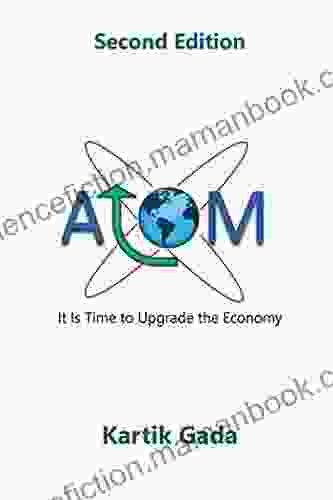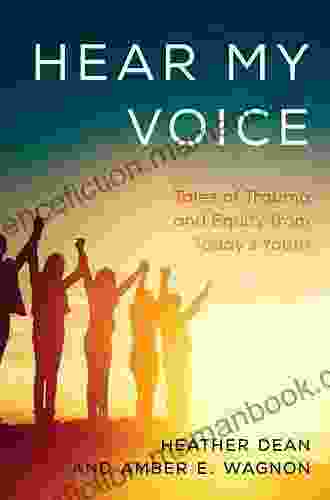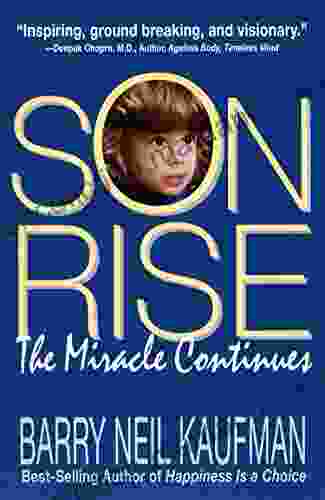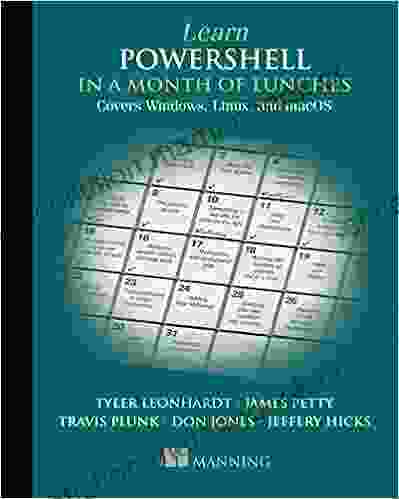Tales of Trauma and Equity from Today's Youth

In the tapestry of human experience, the threads of youth are often vibrant and hopeful. Yet, for far too many, their youthful years are marred by adversity, trauma, and persistent inequities. This article delves into the heart-wrenching tales and sobering statistics that paint a stark picture of the challenges faced by today's youth, while also illuminating the path towards a more just and equitable future.
4.2 out of 5
| Language | : | English |
| File size | : | 478 KB |
| Text-to-Speech | : | Enabled |
| Screen Reader | : | Supported |
| Enhanced typesetting | : | Enabled |
| Word Wise | : | Enabled |
| Print length | : | 112 pages |
The Scars of Trauma
Trauma, in its many insidious forms, leaves indelible scars on the lives of young people. From childhood abuse and neglect to the horrors of war, trauma can disrupt brain development, impair emotional regulation, and undermine physical health. The consequences of trauma are far-reaching, affecting everything from academic achievement to relationships and overall well-being.
Consider the case of Maria, a 16-year-old living in a poverty-stricken neighborhood. Her home is a constant source of chaos and violence, with her parents struggling to make ends meet and resorting to substance abuse. Maria has witnessed countless arguments, witnessed physical altercations, and endured emotional neglect. The weight of her experiences has taken a profound toll on her mental health, leading to anxiety, depression, and suicidal thoughts.
Maria's story is not an isolated one. According to the Centers for Disease Control and Prevention (CDC),more than 60% of children in the United States have experienced at least one traumatic event by the age of 16. The impact of trauma is particularly severe for youth from marginalized communities, who are disproportionately exposed to risk factors such as poverty, discrimination, and violence.
The Shadow of Inequity
Inequity casts a long shadow over the lives of young people, creating barriers to opportunity and perpetuating cycles of disadvantage. From unequal access to education and healthcare to systemic discrimination in the criminal justice system, inequity undermines the potential of our youth and erodes the fabric of our society.
In the realm of education, for example, students from low-income families often attend underfunded schools with overcrowded classrooms, underqualified teachers, and a lack of essential resources. These disparities in educational opportunities translate into lower academic achievement, reduced college attendance rates, and diminished economic prospects.
Consider the story of Jamal, a bright and ambitious 12-year-old boy from a working-class family. Despite his eagerness to learn, Jamal's school is plagued by teacher shortages and dilapidated facilities. The lack of resources and support has hampered his progress, and his dream of becoming a doctor seems increasingly distant.
Jamal's experience is a microcosm of the systemic inequities that pervade our education system. According to the Annie E. Casey Foundation, students from low-income families are three times more likely to attend schools with high teacher turnover rates than their more affluent peers. These disparities contribute to a widening achievement gap, perpetuating a cycle of poverty and inequality.
Urgent Need for Change
The tales of trauma and inequity faced by today's youth are a clarion call for urgent action. We cannot afford to ignore the suffering of our young people or the long-term consequences of these challenges for our society. It is imperative that we work together to create a more just and equitable world for all.
Addressing the trauma experienced by youth requires a comprehensive approach that involves providing accessible mental health services, supporting trauma-informed schools, and addressing the root causes of adversity in our communities.
Combating inequity demands systemic change. We must invest in early childhood education, ensure equal access to quality healthcare and education for all students, and dismantle the barriers that prevent marginalized communities from achieving their full potential.
The youth of today are our future leaders, innovators, and change-makers. By investing in their well-being and creating a more equitable society, we are investing in a brighter future for all.
Rays of Hope
In the midst of the challenges, there are also rays of hope. Young people around the world are rising up, demanding change, and working to create a better future. From organizing protests to advocating for policy changes, youth are playing a vital role in shaping the world they will inherit.
Consider the story of Malala Yousafzai, who survived being shot by the Taliban for speaking out in favor of girls' education. Undeterred, Malala continued her activism, establishing a foundation to support educational opportunities for girls around the world.
Malala's story is an inspiration to us all. It demonstrates the resilience and determination of young people, and it reminds us that even in the face of adversity, there is always hope for a better future.
The tales of trauma and equity faced by today's youth are a sobering reminder of the challenges that our society faces. However, these stories also contain a message of hope. By working together, we can create a more just and equitable world for all young people, one where every child has the opportunity to reach their full potential and thrive.
Let us embrace the resilience and determination of our youth. Let us listen to their voices and amplify their demands for change. Let us create a future where every young person has the chance to live a life free from trauma and inequity, where their dreams can take flight.
For the sake of our youth, and for the future of our society, let us rise to the challenge and build a world that is truly just and equitable for all.
4.2 out of 5
| Language | : | English |
| File size | : | 478 KB |
| Text-to-Speech | : | Enabled |
| Screen Reader | : | Supported |
| Enhanced typesetting | : | Enabled |
| Word Wise | : | Enabled |
| Print length | : | 112 pages |
Do you want to contribute by writing guest posts on this blog?
Please contact us and send us a resume of previous articles that you have written.
 Top Book
Top Book Novel
Novel Fiction
Fiction Nonfiction
Nonfiction Literature
Literature Paperback
Paperback Hardcover
Hardcover E-book
E-book Audiobook
Audiobook Bestseller
Bestseller Classic
Classic Mystery
Mystery Thriller
Thriller Romance
Romance Fantasy
Fantasy Science Fiction
Science Fiction Biography
Biography Memoir
Memoir Autobiography
Autobiography Poetry
Poetry Drama
Drama Historical Fiction
Historical Fiction Self-help
Self-help Young Adult
Young Adult Childrens Books
Childrens Books Graphic Novel
Graphic Novel Anthology
Anthology Series
Series Encyclopedia
Encyclopedia Reference
Reference Guidebook
Guidebook Textbook
Textbook Workbook
Workbook Journal
Journal Diary
Diary Manuscript
Manuscript Folio
Folio Pulp Fiction
Pulp Fiction Short Stories
Short Stories Fairy Tales
Fairy Tales Fables
Fables Mythology
Mythology Philosophy
Philosophy Religion
Religion Spirituality
Spirituality Essays
Essays Critique
Critique Commentary
Commentary Glossary
Glossary Bibliography
Bibliography Index
Index Table of Contents
Table of Contents Preface
Preface Introduction
Introduction Foreword
Foreword Afterword
Afterword Appendices
Appendices Annotations
Annotations Footnotes
Footnotes Epilogue
Epilogue Prologue
Prologue Siegfried Futterlieb
Siegfried Futterlieb Dean Jobb
Dean Jobb Julia Pascal
Julia Pascal Carolina Frohlich
Carolina Frohlich Kate Hewitt
Kate Hewitt H L Carter
H L Carter Edward Ruadh Butler
Edward Ruadh Butler Linda S Dowling
Linda S Dowling Rashelle Workman
Rashelle Workman James Naughton
James Naughton George Shetuni
George Shetuni Simon Child
Simon Child Francisca Orellana Polanka
Francisca Orellana Polanka Neelam Patel
Neelam Patel Benjamin Spock
Benjamin Spock Kate Winkler Dawson
Kate Winkler Dawson Nicole A Taylor
Nicole A Taylor Lena Greiner
Lena Greiner Jeff Lowenfels
Jeff Lowenfels Robbie Thompson
Robbie Thompson
Light bulbAdvertise smarter! Our strategic ad space ensures maximum exposure. Reserve your spot today!

 Brady MitchellIt Is Time To Upgrade The Economy: Introducing the Innovative and Sustainable...
Brady MitchellIt Is Time To Upgrade The Economy: Introducing the Innovative and Sustainable... Deion SimmonsFollow ·14k
Deion SimmonsFollow ·14k Kenneth ParkerFollow ·6.2k
Kenneth ParkerFollow ·6.2k Jimmy ButlerFollow ·19.4k
Jimmy ButlerFollow ·19.4k Carlos DrummondFollow ·9.2k
Carlos DrummondFollow ·9.2k Wayne CarterFollow ·5.7k
Wayne CarterFollow ·5.7k Ernest HemingwayFollow ·12.6k
Ernest HemingwayFollow ·12.6k Cade SimmonsFollow ·17.3k
Cade SimmonsFollow ·17.3k Evan SimmonsFollow ·3.7k
Evan SimmonsFollow ·3.7k

 Ashton Reed
Ashton ReedClean(ish) Food for People Who Like to Eat Dirty
By: [Your Name] Are...

 Ronald Simmons
Ronald SimmonsThe Handbook for Educators: A Comprehensive Guide to...
The Handbook for...

 Derrick Hughes
Derrick HughesAny Place Hang My Hat: A Hauntingly Beautiful Novel by...
A Masterpiece of...

 Adrien Blair
Adrien BlairFly Me to the Moon Vol. 5: A Lunar Odyssey through...
In the vast...

 William Powell
William PowellTips By Gardeners On Variety Of Subjects
Gardening...
4.2 out of 5
| Language | : | English |
| File size | : | 478 KB |
| Text-to-Speech | : | Enabled |
| Screen Reader | : | Supported |
| Enhanced typesetting | : | Enabled |
| Word Wise | : | Enabled |
| Print length | : | 112 pages |












